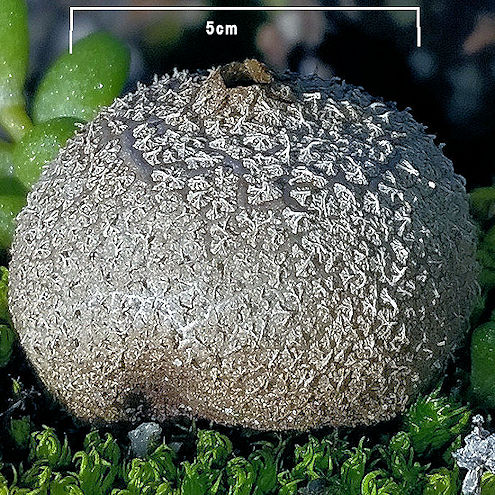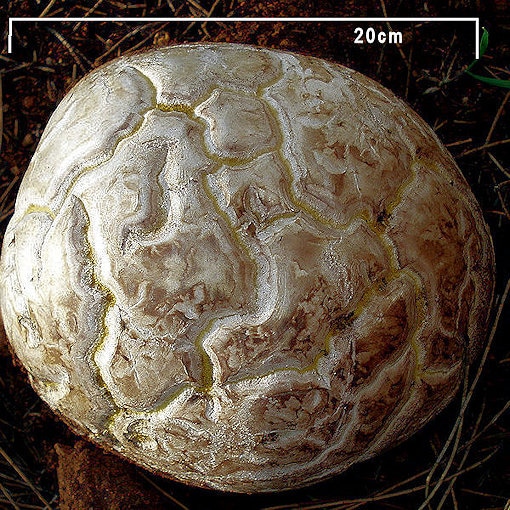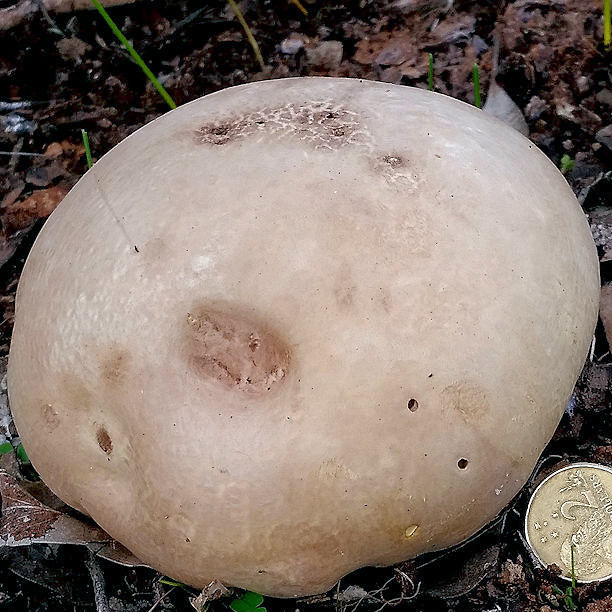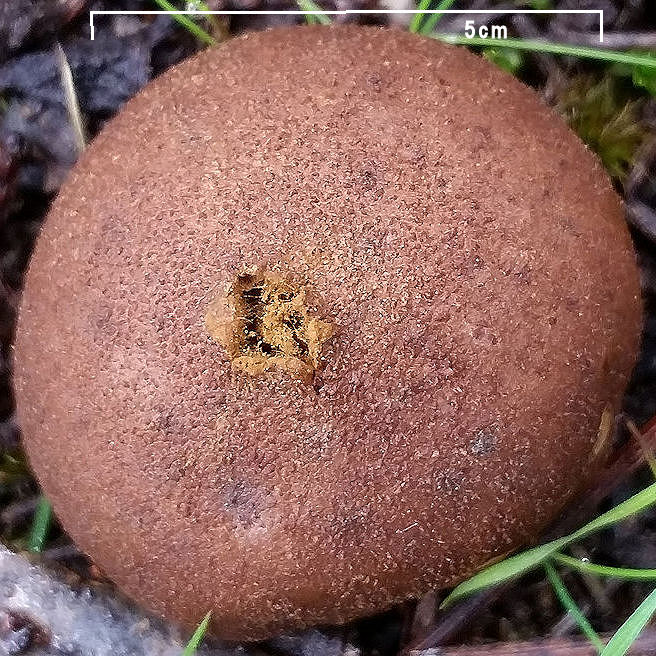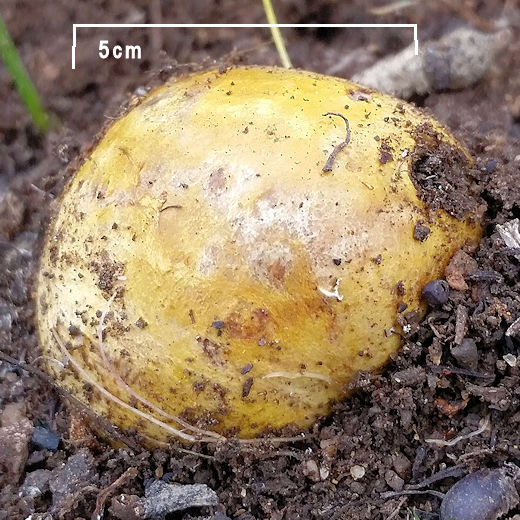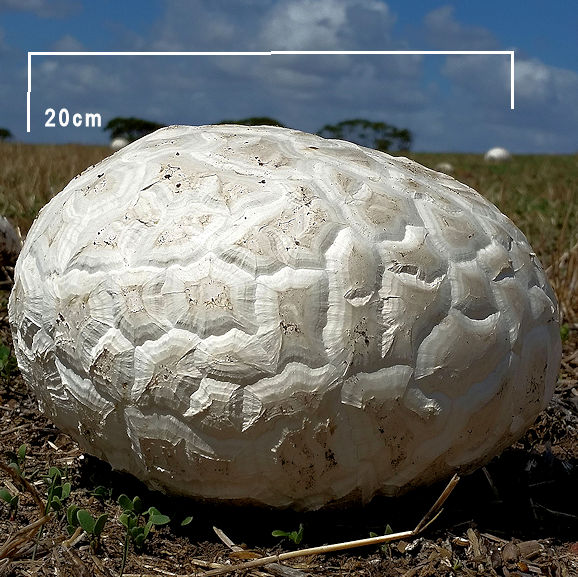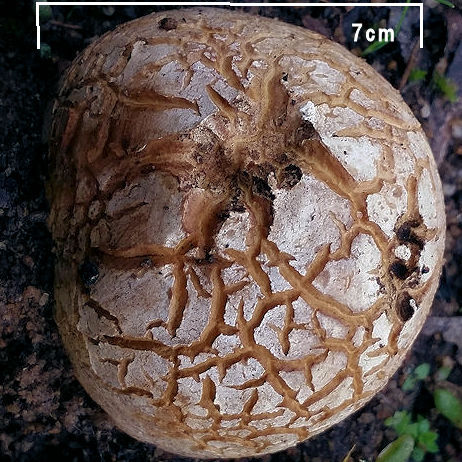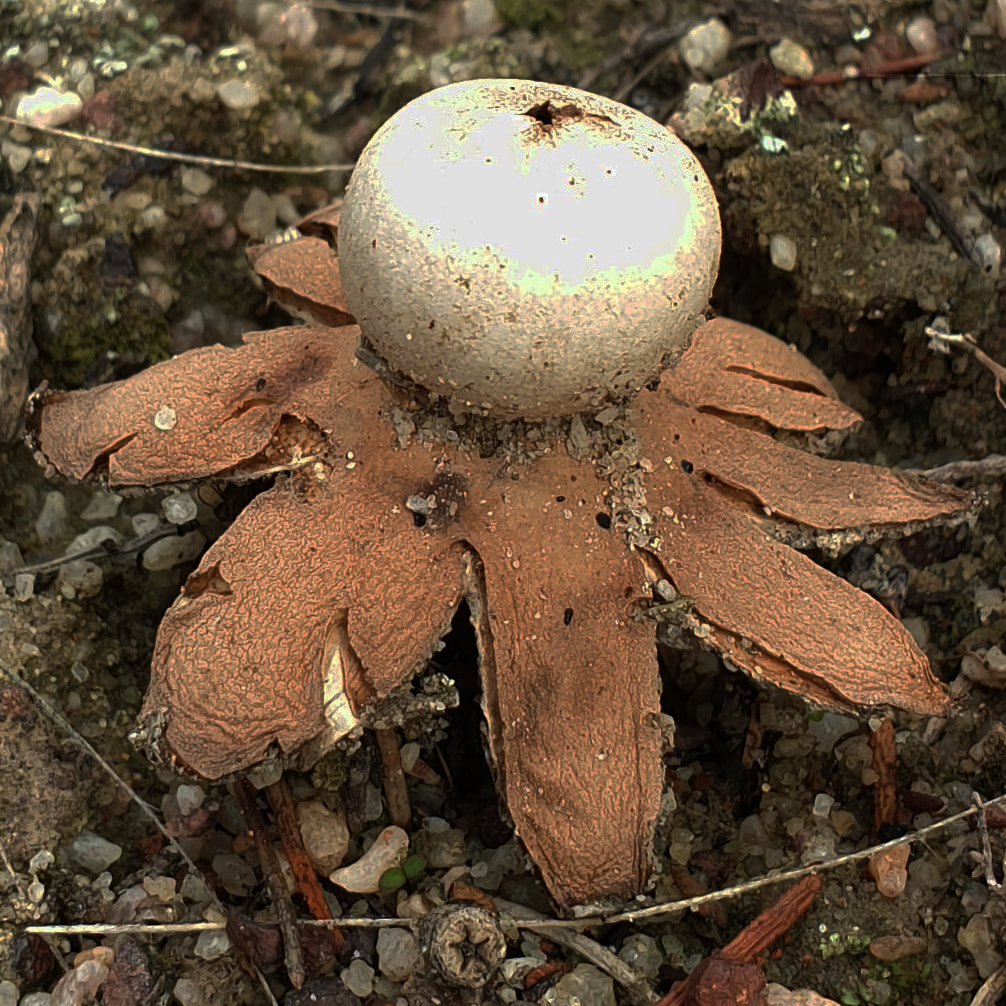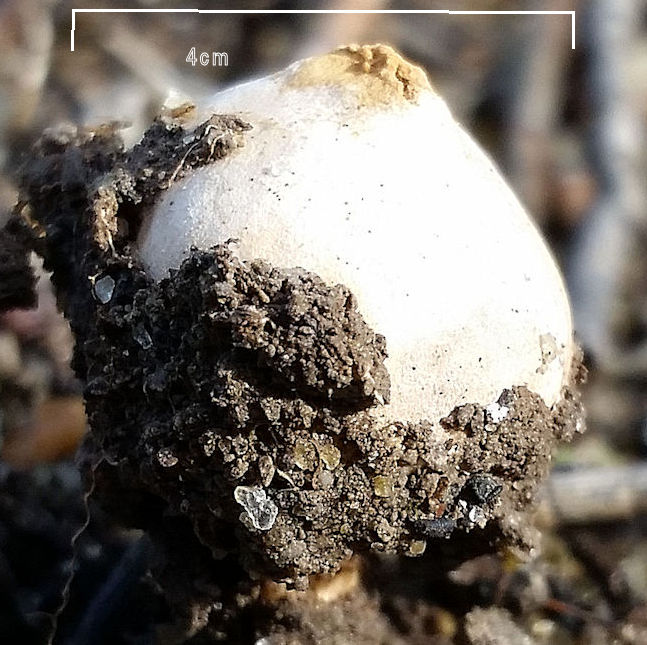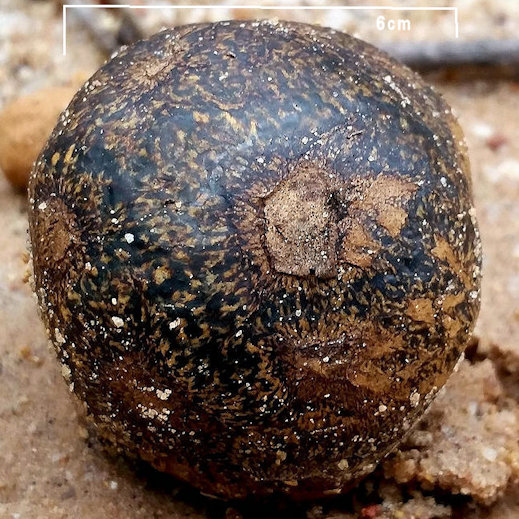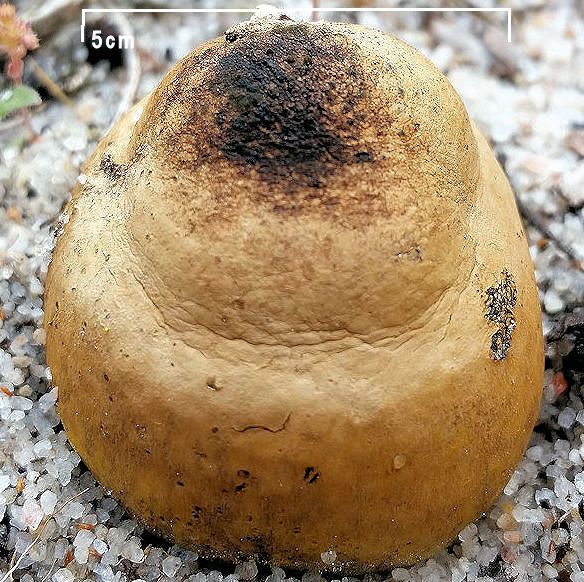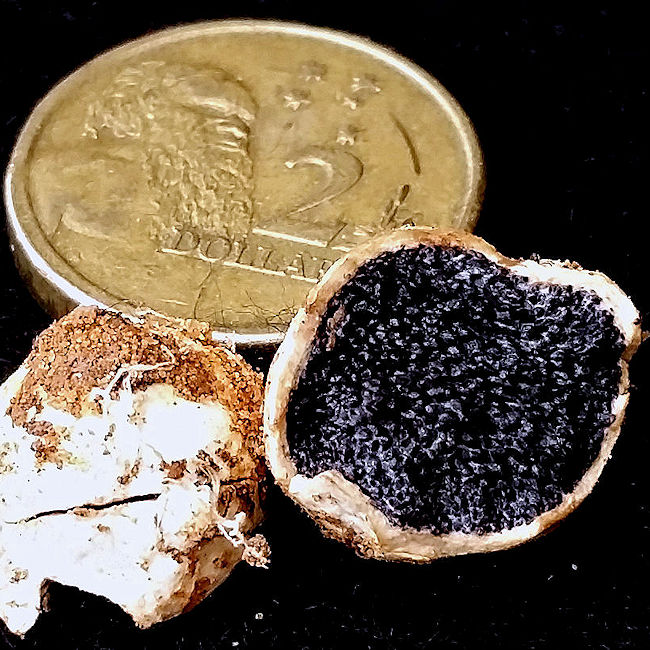Earth Balls, Puffballs and Earth Stars
These consist of a mass of spores called a gleba, surrounded by a firm skin called a peridium.
Earth balls initially have a firm white gleba that quickly turns purplish black. The single layered peridium splits randomly to release powdery spores.
Puffballs initially have a soft white gleba that becomes yellow and squishy then loose and powdery spores are released from a hole at the top . The peridium has two layers with the outer one often being ornamented, or in earth stars, peels back from the inner layer.
Stalked puffballs have a stalk that lifts the puffball from hot soil in dry areas.
Rapidly expanding puffballs may split at the early white gleba stage.
Earth balls initially have a firm white gleba that quickly turns purplish black. The single layered peridium splits randomly to release powdery spores.
Puffballs initially have a soft white gleba that becomes yellow and squishy then loose and powdery spores are released from a hole at the top . The peridium has two layers with the outer one often being ornamented, or in earth stars, peels back from the inner layer.
Stalked puffballs have a stalk that lifts the puffball from hot soil in dry areas.
Rapidly expanding puffballs may split at the early white gleba stage.
